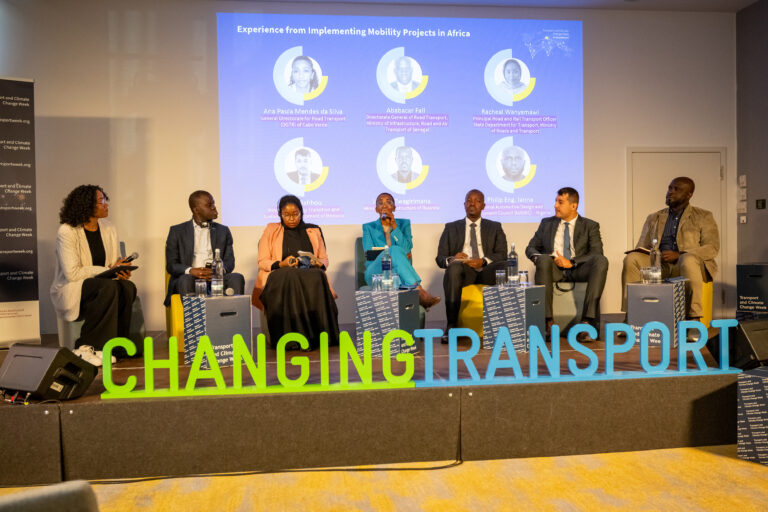Three projects in Czechia receive EU funding to improve public infrastructure – European Climate, Infrastructure and Environment Executive Agency

Report on Public Sector Investment in Sustainable Urban Development in Czechia
Introduction
An investment of approximately €1.4 million from the Public Sector Loan Facility (PSLF) has been allocated to three municipalities in the Ústí nad Labem and Moravia-Silesia regions of Czechia. These funds support projects designed to accelerate a just transition towards a climate-neutral economy, with a significant focus on achieving multiple Sustainable Development Goals (SDGs). The initiatives target improvements in public infrastructure, energy efficiency, and social inclusivity, directly contributing to the creation of sustainable and resilient communities.
Project Overviews and SDG Alignment
The funded projects demonstrate a clear commitment to integrated sustainable development, addressing environmental, social, and economic objectives.
1. Postoloprty: Revitalisation of the Historical Centre
This project in the Ústí nad Labem region, supported by a €544,986 grant, aims to transform the town’s main square into a multifunctional, accessible, and inclusive public space. The initiative’s contributions to the SDGs are outlined below:
- SDG 6 (Clean Water and Sanitation) & SDG 12 (Responsible Consumption and Production): Development of advanced water management systems is projected to reduce potable water consumption by up to 40% and improve stormwater management.
- SDG 7 (Affordable and Clean Energy) & SDG 13 (Climate Action): The installation of energy-efficient lighting is expected to lower energy consumption by 30-50%, resulting in an annual reduction of approximately 1.2 tonnes of CO₂ emissions.
- SDG 11 (Sustainable Cities and Communities): The project enhances urban public space for nearly 5,000 residents by redesigning the main square, adding new bus stops, and installing modern urban furniture, fostering a more inclusive and resilient community environment.
2. Dolní Benešov: Construction of a New Sports Hall
A grant of €441,581 will fund the construction of a modern sports facility in the Moravia-Silesia region. The project is designed to serve approximately 4,000 residents and over 8,000 visitors, aligning with several key SDGs:
- SDG 3 (Good Health and Well-being): The facility provides a modern and accessible venue for sports and physical activity, promoting community health and well-being.
- SDG 7 (Affordable and Clean Energy): The structure will be built to high energy efficiency standards, contributing to the region’s low-carbon development goals.
- SDG 8 (Decent Work and Economic Growth): By serving as a venue for regional and international events, the sports hall is expected to stimulate local entrepreneurship and support the local economy.
- SDG 9 (Industry, Innovation, and Infrastructure): The project represents an investment in modern, sustainable, and resilient public infrastructure.
3. Děčín: Energy Efficiency Upgrades for Public Buildings
With a grant of €384,893, the municipality of Děčín in the Ústí nad Labem region will upgrade 16 public buildings, including educational and cultural facilities. This initiative directly targets critical energy and climate goals:
- SDG 7 (Affordable and Clean Energy): The project implements significant energy-saving measures, such as the installation of LED lighting and advanced building management systems, and promotes the integration of renewable energy solutions.
- SDG 11 (Sustainable Cities and Communities): Upgrading municipal infrastructure improves the quality of life for 46,000 residents and enhances the environmental performance of the city’s public assets.
- SDG 13 (Climate Action): The energy efficiency modernisations are projected to reduce CO₂ emissions by an estimated 181 tonnes annually, representing a substantial contribution to climate change mitigation.
Funding Mechanism and Stakeholder Alignment with SDGs
The Public Sector Loan Facility (PSLF)
The PSLF is a critical component of the Just Transition Mechanism (JTM), designed to ensure an equitable transition to a climate-neutral economy. Its operational model is a direct embodiment of SDG 17 (Partnerships for the Goals).
- Collaborative Funding: The facility combines grants from the European Commission with loans from the European Investment Bank (EIB) to mobilise investment in regions identified in Territorial Just Transition Plans.
- Targeted Support: It provides financial support for public sector projects that do not generate sufficient revenue to cover their costs but are essential for meeting development needs and climate targets.
- Implementation Partnership: The PSLF is managed by the Directorate-General for Regional and Urban Policy (DG REGIO) and implemented by the European Climate, Infrastructure and Environment Executive Agency (CINEA), showcasing a multi-agency partnership dedicated to sustainable development.
Key Implementing and Supporting Bodies
- DG REGIO: As the European Commission’s department for regional and urban policy, DG REGIO is central to achieving SDG 11 by fostering the economic and social development of EU regions.
- CINEA: This agency implements EU funding for climate, infrastructure, and environment programmes, directly supporting SDG 7, SDG 9, SDG 13, and SDG 14 (Life Below Water).
- EIB: The EU’s long-term financing institution provides crucial capital for high-quality investments that contribute to EU policy objectives, including the comprehensive agenda of the Sustainable Development Goals.
Analysis of Sustainable Development Goals in the Article
1. Which SDGs are addressed or connected to the issues highlighted in the article?
-
SDG 3: Good Health and Well-being
- The article mentions the construction of a new sports hall in Dolní Benešov, which is intended to support “community well-being.” Providing modern and accessible sporting facilities encourages physical activity, which is a key component of a healthy lifestyle.
-
SDG 6: Clean Water and Sanitation
- The revitalisation project in Postoloprty explicitly addresses water management. The article states the project will “develop smarter water systems” and is “expected to reduce the use of drinkable water by up to 40%,” directly contributing to sustainable water management.
-
SDG 7: Affordable and Clean Energy
- All three projects highlighted in the article have a strong focus on energy efficiency. The Postoloprty project includes “energy-efficient lighting” to lower energy consumption. The sports hall in Dolní Benešov will be built to “high energy efficiency standards.” The Děčín project is entirely focused on upgrading public buildings to be more “energy efficient” through measures like “LED lighting” and promoting “system integration of renewable energy solutions.”
-
SDG 11: Sustainable Cities and Communities
- The core of the article revolves around “sustainable urban development projects.” The Postoloprty project aims to create a “multifunctional, accessible and inclusive public space.” The Dolní Benešov project provides new “sports infrastructure” for residents and visitors. The Děčín project upgrades “public buildings, including education and cultural facilities.” These actions directly enhance public infrastructure and improve the quality of life in cities.
-
SDG 13: Climate Action
- The projects are framed within the context of a “just transition towards climate resilience” and a “climate-neutral economy.” The article provides specific figures on climate impact mitigation, such as the Postoloprty project reducing “approximately 1.2 tonnes of CO2 per year” and the Děčín project reducing “CO2 emissions by 181 tonnes annually.”
-
SDG 17: Partnerships for the Goals
- The article describes a clear partnership model for achieving these goals. The Public Sector Loan Facility (PSLF) is a collaboration that “combines loans from the European Investment Bank (EIB) with grants from the European Commission.” This partnership between international financial institutions and public sector entities in Czechia is crucial for funding and implementing the projects.
2. What specific targets under those SDGs can be identified based on the article’s content?
-
Target 6.4: Substantially increase water-use efficiency
- The Postoloprty project directly addresses this target by implementing “smarter water systems” designed to “reduce the use of drinkable water by up to 40%.”
-
Target 7.3: Double the global rate of improvement in energy efficiency
- This target is central to all three projects. The Postoloprty project aims to “lower energy consumption by 30 to 50%.” The Dolní Benešov sports hall will be built to “high energy efficiency standards.” The Děčín project focuses on making 16 public buildings “more energy efficient” through specific measures.
-
Target 11.3: Enhance inclusive and sustainable urbanization
- The Postoloprty project, which aims to create a “multifunctional, accessible and inclusive public space” through the redesign of its main square, directly aligns with enhancing sustainable urbanization and planning.
-
Target 11.6: Reduce the adverse per capita environmental impact of cities
- The projects contribute to this target by reducing pollution. The article quantifies this with expected CO2 emission reductions of “1.2 tonnes” in Postoloprty and “181 tonnes” in Děčín annually.
-
Target 11.7: Provide universal access to safe, inclusive and accessible, green and public spaces
- The revitalisation of Postoloprty’s historical centre to create an “accessible and inclusive public space” and the construction of a “modern and accessible sporting facility” in Dolní Benešov are direct implementations of this target.
-
Target 13.2: Integrate climate change measures into policies and planning
- The projects are funded under the Public Sector Loan Facility, which is part of the Just Transition Mechanism and the European Green Deal. This demonstrates the integration of climate action into regional development and investment planning, as the funds are specifically for regions moving “towards a climate-neutral economy.”
3. Are there any indicators mentioned or implied in the article that can be used to measure progress towards the identified targets?
-
Indicators for Water Efficiency (Target 6.4)
- The article provides a clear quantitative indicator: a projected “40% reduction in the use of drinkable water” in Postoloprty.
-
Indicators for Energy Efficiency (Target 7.3)
- A quantitative indicator is the “30 to 50% reduction in energy consumption” in Postoloprty.
- Qualitative indicators include the implementation of “energy-efficient lighting,” “LED lighting,” and “advanced building management systems” across the projects.
-
Indicators for Environmental Impact and Climate Action (Targets 11.6 & 13.2)
- The article provides specific, measurable indicators for greenhouse gas emission reductions: “1.2 tonnes of CO2 per year” for the Postoloprty project and “181 tonnes of CO2 annually” for the Děčín project.
-
Indicators for Public Space and Infrastructure (Target 11.7)
- The creation of new infrastructure serves as an indicator, such as the “new bus stops and urban furniture” in Postoloprty and the “new sports hall” in Dolní Benešov with a “25 by 40-metre arena and a seating area for 200 spectators.”
-
Indicators for Partnerships (SDG 17)
- The financial investment mobilized through the partnership is a key indicator. The article states that “almost €1.4 million” was provided from the PSLF, with specific grant amounts listed for each municipality (€544,986, €441,581, and €384,893).
4. Summary Table of SDGs, Targets, and Indicators
| SDGs | Targets | Indicators |
|---|---|---|
| SDG 3: Good Health and Well-being | Promote well-being for all at all ages. | Construction of a new, modern, and accessible sporting facility to support community well-being. |
| SDG 6: Clean Water and Sanitation | Target 6.4: Substantially increase water-use efficiency. | Reduction in the use of drinkable water by up to 40%. |
| SDG 7: Affordable and Clean Energy | Target 7.3: Double the rate of improvement in energy efficiency. |
|
| SDG 11: Sustainable Cities and Communities | Target 11.3: Enhance inclusive and sustainable urbanization. | Creation of a multifunctional, accessible, and inclusive public space. |
| Target 11.6: Reduce the adverse per capita environmental impact of cities. | Reduction of CO2 emissions (1.2 tonnes/year and 181 tonnes/year). | |
| Target 11.7: Provide universal access to safe, inclusive and accessible, green and public spaces. | Redesign of a main square; creation of new bus stops and urban furniture; construction of a new sports hall. | |
| SDG 13: Climate Action | Target 13.2: Integrate climate change measures into policies and planning. |
|
| SDG 17: Partnerships for the Goals | Encourage and promote effective public, public-private and civil society partnerships. | Mobilization of €1.4 million through a partnership between the European Investment Bank and the European Commission to fund public sector projects. |
Source: cinea.ec.europa.eu
What is Your Reaction?
 Like
0
Like
0
 Dislike
0
Dislike
0
 Love
0
Love
0
 Funny
0
Funny
0
 Angry
0
Angry
0
 Sad
0
Sad
0
 Wow
0
Wow
0















































/environment-climate-change-and-health-(ech)/water-sanitation-hygiene-and-health-(wsh)/landfill-tuvalu-36092.tmb-1200v.jpg?sfvrsn=5c21fe40_1#)


.jpg.webp?itok=0ZsAnae9#)

























